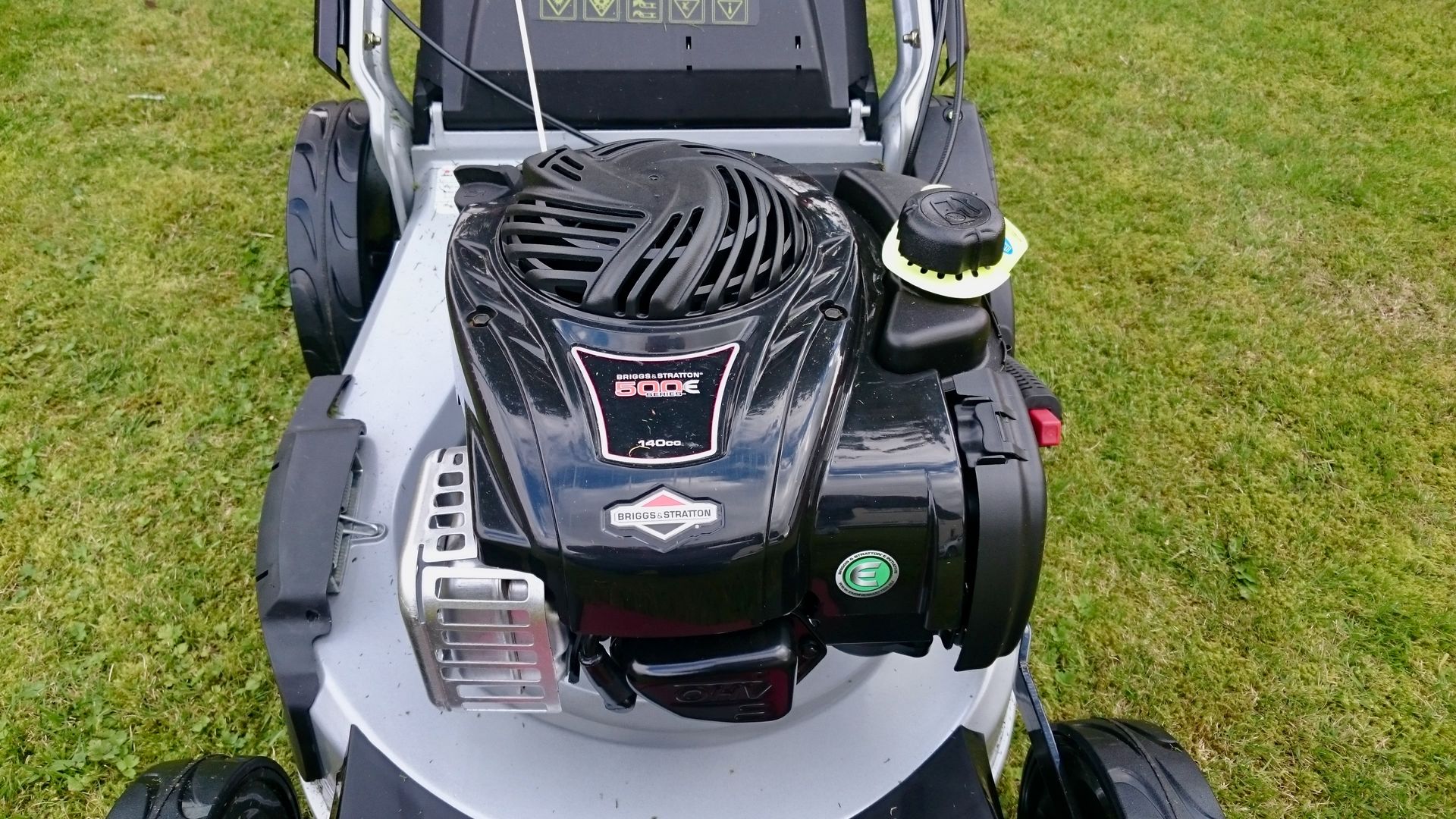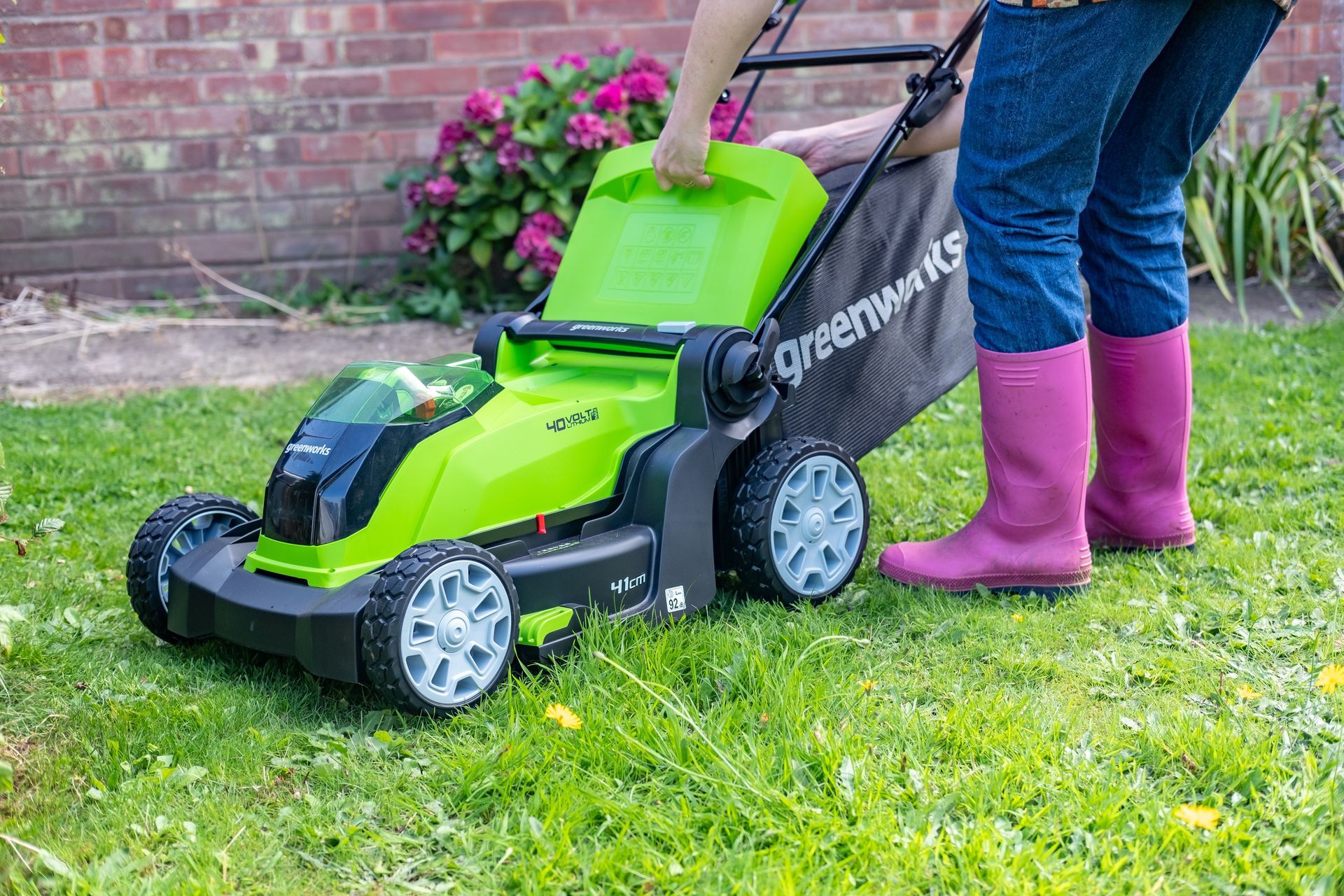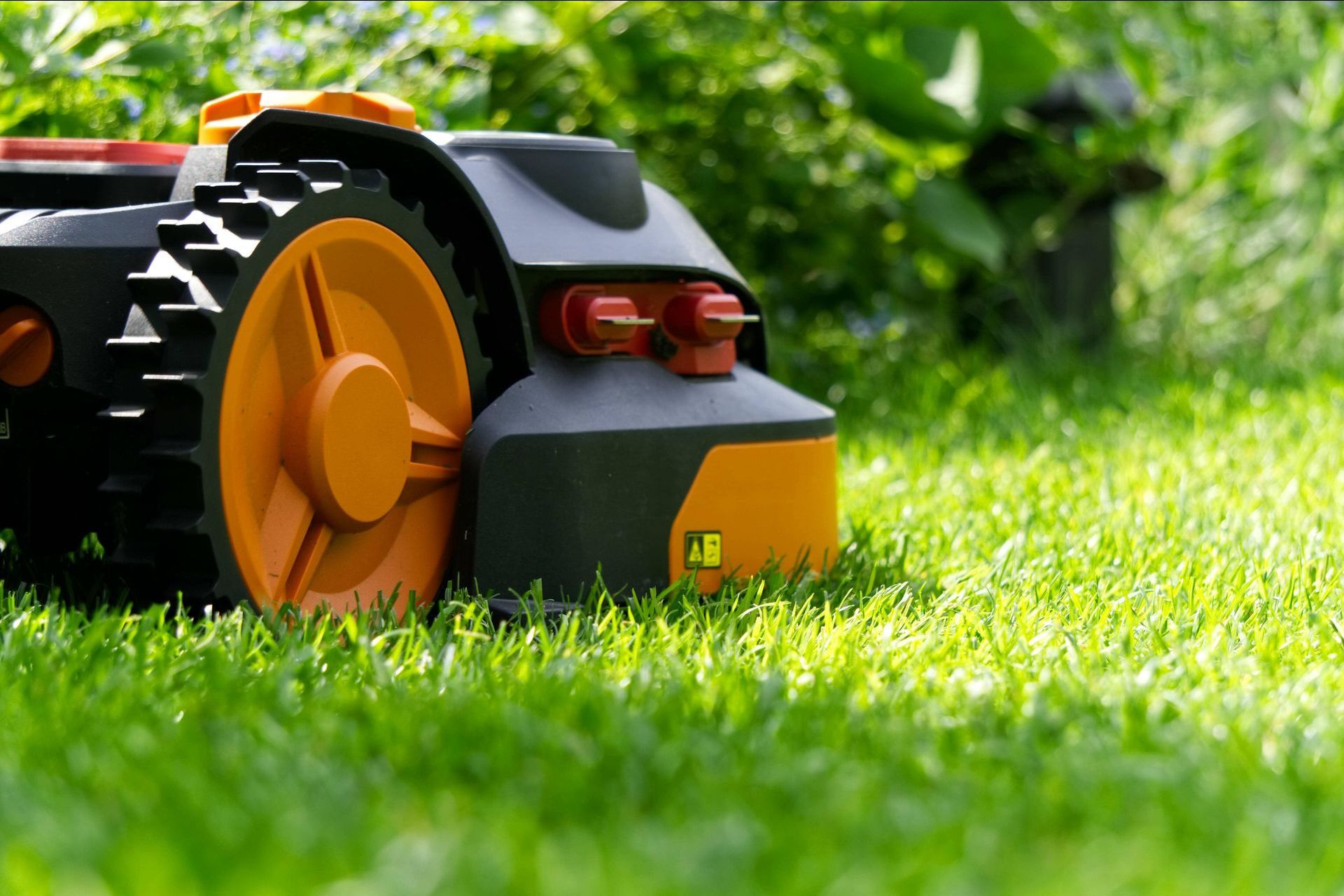Lawnmowers have evolved remarkably in less than 200 years. Image Credit: Ultraskrip
*Important Information: As an audience supported website, if you purchase an item after clicking an external link or advertisement marked with an asterisk (*) on this website, we may receive a commission. This does not change the price you pay.
History Of The Lawnmower
Look around you, and wherever you travel in the UK, you’re never far away from grass.
Even in the midst of our biggest cities, grass abounds. Sometimes you’ll find it along central reservations. Other times, it surrounds the base of ornamental trees, strategically placed to break up the monotony of tarmacadam and concrete. You’ll find it on roofs and vertical gardens. And of course, you’ll find grass in our great parks and stately gardens too.
Lawnmowers have evolved remarkably in less than 200 years. Image Credit: Ultraskrip
A Budding Business
Before the 1830s, things were very different. The lawnmower had not yet been invented. Instead, scythes were the order of the day.
The invention of the lawnmower, as we know it, can be attributed to a Mr. Edwin Budding, a native of Thrupp, near Stroud, Gloucestershire. Mr. Budding’s lawnmower was primarily designed to mow grass areas in sports grounds, and formal lawns on large country estates. Incorporating a wrought iron frame, the machine was pushed from behind, with cast-iron gear wheels transmitting power from the rear roller to the cutting cylinder. Cut of height could be adjusted by raising – or lowering – an intermediate roller. Clippings were collected in a primitive grass collector, mounted ahead of the cylinder.
At the time, it was a revolution. It heralded the dawn of a new era, which over the next century and beyond, would see the mechanisation of everyday gardening tasks.
Mr. Budding’s invention received a British patent in August 1830. Almost 2 centuries later, it remains instantly recognisable as a lawnmower. The enterprising Mr. Budding subsequently licensed his invention to other manufacturers, including in 1832, an Ipswich based company called Ransomes, Sims and Jefferies Limited. The original company’s legacy continues to this very day, with Ransomes Jacobsen, continuing to manufacture grass and groundscare equipment in Ipswich, as a subsidiary of US giant, Textron.
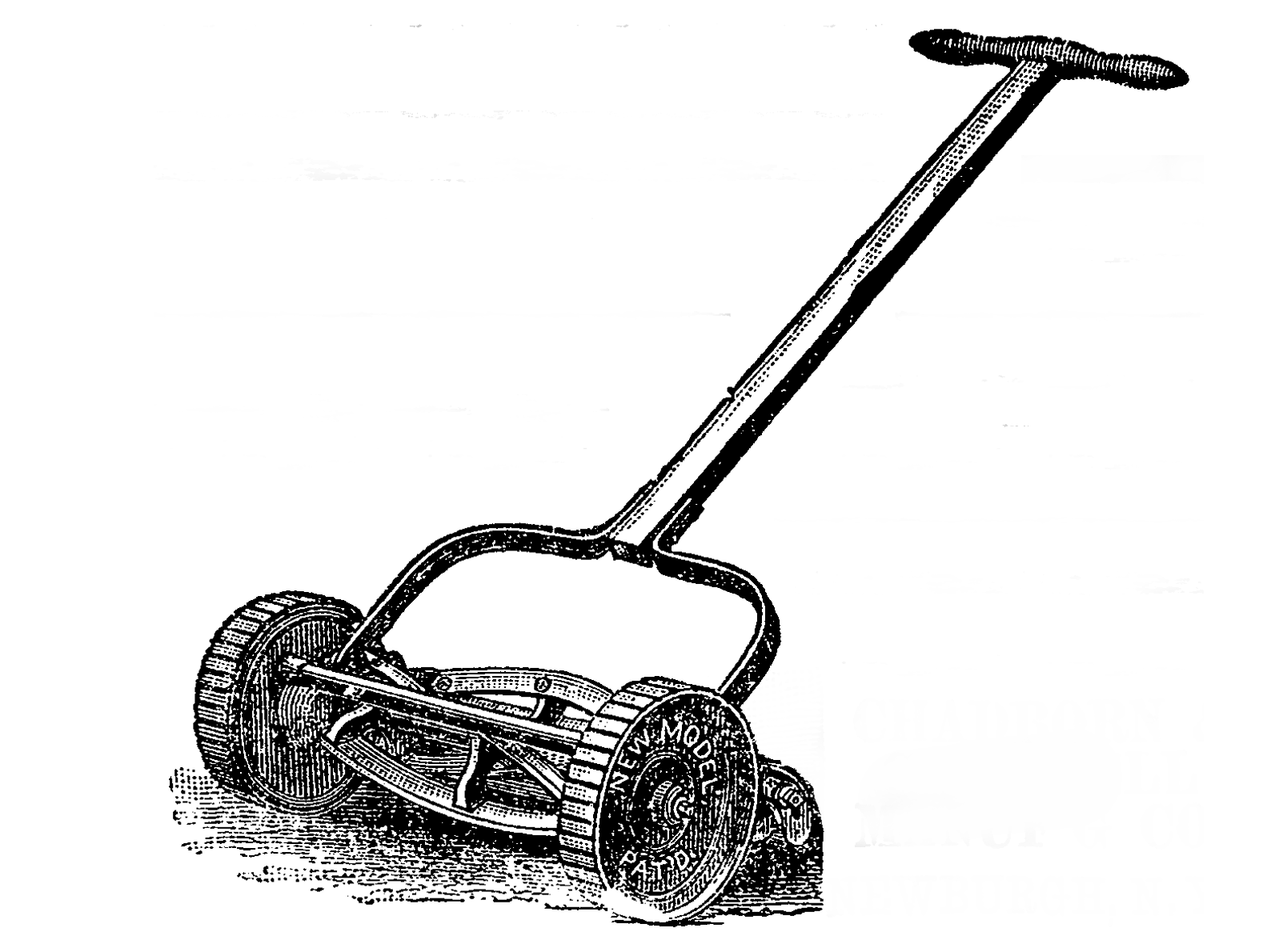
A cylinder mower from 1888, manufactured in the USA by Chadborn & Coldwell Manufacturing, Newburgh, NY. Image Credit: Garden & Forest: A Journal of Horticulture, Landscape Art, and Forestry, via US Library of Congress
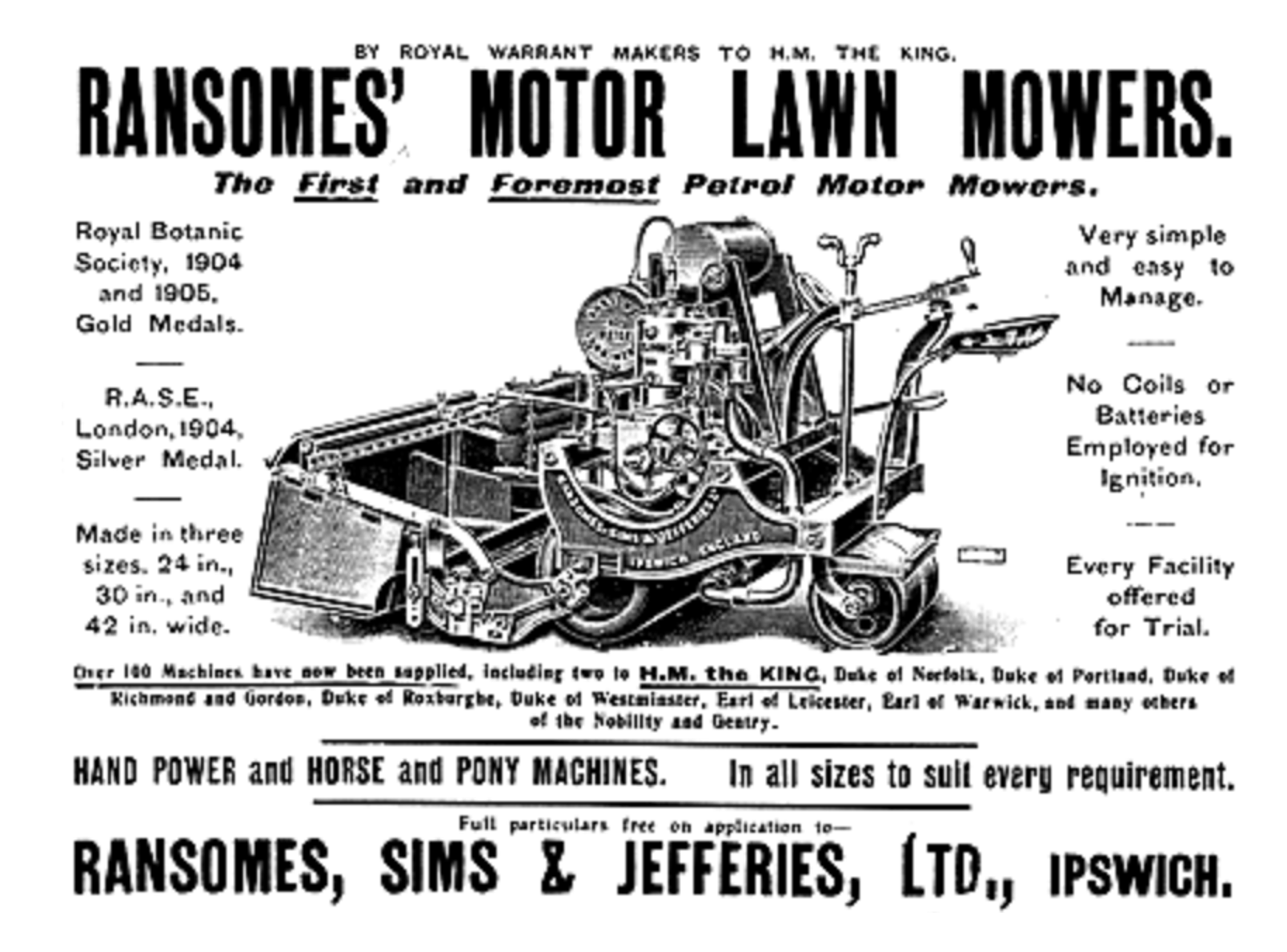
An early 20th. century advertisement for Ransomes’ Motor Lawn Mower, the world’s first petrol engined lawn mower, manufactured by Ransomes, Sims & Jefferies Ltd. Photo Credit: Ransomes, Sims & Jefferies Limited, via
Wikipedia
The Petrol Era
The next significant innovation was in 1902, when the aforementioned Ransomes, Sims and Jefferies introduced the world’s first petrol powered mower. The machine was available in a choice of 24”, 30” and 42” cutting widths. And whilst Mr. Budding’s machine even today remains recognisable as a lawnmower, ‘Ransome’s Petrol Lawn Mower’ resembled a miniature steam engine… and a 21st. century Health & Safety Manager’s worst nightmare!
The design was however refined over subsequent decades. It wasn’t long until models appeared, which in terms of design and operation are similar to modern petrol mowers. Rival manufacturers and brands also appeared – some of which will remain familiar to gardeners across the land.
In the UK, names such as ATCO, Hayter, Mountfield and Qualcast were to become synonymous with the manufacture of lawnmowers and garden machinery – even if very sadly, ATCO, Mountfield and Qualcast, are now either primarily, or exclusively manufactured overseas. In the USA, brands such as Murray, Snapper and TORO came to the fore. And down under, brands including Rover and Victa emerged - many of whose machines were to be exported back to the ‘old country’, where they gained a deserved reputation for toughness and longevity.
Any mention of petrol lawnmowers would of course be incomplete if it were to omit Briggs & Stratton. Known to many as simply ‘Briggs’, the Milwaukee based manufacturer’s small engines transformed the prospects of the petrol mower, as well as making life easier for millions of gardeners worldwide.
Milwaukee based Briggs & Stratton’s small petrol engines, such as the 500E model fitted to this World machine, have transformed how millions of gardeners worldwide care for their lawn. Image Credit: Author

When it first appeared in 1965, fresh from Flymo's Newton Aycliffe factory, Karl Dahman’s hover mower ushered in a revolution in lawncare. Image
Credit: Irene Miller
The Arrival of Electric
In the decades that followed the Second World War, electric powered lawnmowers became increasingly popular.
By the 1970s, electric mowers were the most popular type of lawnmower on sale. As gardens became seemingly ever-smaller, compact, lightweight, and inherently affordable electric mowers had much to commend them. Sure, they could not rival the power and performance of petrol engine machines. But on the smaller lawns which typified post war British housing development, none of that really mattered. Whilst Black & Decker and Qualcast, dominated the electric market for many years, established petrol lawnmower manufacturers got in on the act too.
A similarly disruptive influence was the arrival of the hover mower. Invented by Karl Dahman, the world’s first hover mower glided out of Flymo’s factory in Newton Aycliffe, County Durham in 1965. The concept prove an instant hit. By 1970, Flymo had been acquired by Swedish manufacturing giant Electrolux. Today, the Newton Aycliffe factory continues to produce mowers, as part of horticultural machinery giant – and former Electrolux subsidiary – Husqvarna.
The arrival of electric and hover machines also saw a significant change in the structure of the market. Lawnmowers were no longer the exclusive preserve of agricultural and horticultural dealers. Arriving ready to use, electric lawnmowers began appearing in department stores, variety stores, catalogue stores and ultimately, even supermarkets.
Established retailers such as FW Woolworth were quick to identify the opportunity presented, via both their High Street variety stores and out-of-town Woolco hypermarkets. In addition to selling proprietary brands, for a time Woolworth also sold electric machines under its own ‘Winfield’ brand. That darling of the 1970s High Street, Argos, became and remains a significant reseller of mowers too. As does out-of-town DIY giant B&Q – at one stage a subsidiary of FW Woolworth itself. Lawnmowers also began to appear in mail-order catalogues, allowing cash strapped householders the opportunity to order a mower, and pay it off in regular monthly instalments.
Today of course, lawnmowers can be found on sale in national hardware chains such as Screwfix, department stores, together with supermarkets such as Lidl and Aldi. So, you can now pick up a mower in between shopping for sausages and soap powder. Although, quite why anyone might want to, is an altogether different matter.
The Internet Age
The late 90’s saw the arrival of the internet, which was to transform how businesses operate worldwide. The lawnmower and horticultural machinery industries were no exception. Several enterprising dealers set up websites, where customers could order their preferred machine with the click of a mouse. Some of those websites disappeared almost as quickly as they appeared, whilst others remain online to this very day.
Manufacturers too established their own sites. Initially, these took the form of an online catalogue, designed to drive traffic to dealers’ showrooms and websites. Over subsequent years, online shops were added, with some manufacturers even choosing to supply products in competition to their established dealer networks.
By integrating dealers into their online fulfilment model, other manufacturers took a different view. You can now order online and have your machine delivered to your home by a local dealer, inspected, tested, fuelled or charged, and ready to mow.
Accompanying the emergence and widespread adoption of the internet was globalisation. Some long-established British, European and North American manufacturers saw this as an opportunity to offshore production to low-cost economies. China soon emerged as the world’s largest manufacturer of lawnmowers.
Other brands simply disappeared, before reappearing on low cost and sometimes low-quality machines, usually manufactured by somebody else. And at the same time, some other suppliers saw the disruptive impact of the internet and globalisation as an opportunity to gain a foothold in new geographic markets. A combination of lower manufacturing costs and greater supply chain efficiencies frequently allowed these manufacturers to undercut established players.
The March of Technology
For many years, the petrol mower evolved slowly, following a path of incremental improvement and change. But since the mid 90s, in response to both consumer demand and evermore stringent environmental regulation, petrol engine mowers have evolved considerably.
Today’s petrol engines are more efficient, more powerful, and more complex than ever before, and yet somehow, they consume less fuel. An overhead valve (OHV) engine is now the norm, as too are electronic ignition systems and operator presence controls (OPCs). Some machines even feature engines that will never require an oil change. And whilst the humble starting cable still predominates at the lower end of the market, many mid and high-end machines now incorporate battery powered, electric and electronic starting systems.
Further proof that neither time nor technology stand still, is the arrival of cordless, ‘robotic mowers’. Designed to work outside in all weathers, these cleverly designed machines require virtually no user intervention. Some can even be controlled from anywhere on earth, via an internet connected smartphone or tablet.
Whilst sales of robotic mowers have grown remarkably over recent years, many British gardeners continue to demonstrate a preference for mowers which require greater manual input. Might it be that cutting the grass is more than a simple chore? Perhaps, just perhaps, it’s something deep down, we actually enjoy?
Cordless, li-ion, battery powered mowers, such as this 41cm 40-volt Greenworks' model, are an increasingly popular choice with British gardeners. Image Credit: Yackers1
Whilst sales of robotic mowers have increased markedly over recent years, the majority of UK gardeners continue to demonstrate a preference for hand and self-propelled machines. Image Credit: distelAPPArath
One concept which has very definitely caught the imagination of consumers is the cordless battery electric mower.
Cordless mowers have been available for some time within the commercial sector. But it’s only within the past decade, their performance has caught up with consumer expectations of what a cordless mower should be, and more importantly, how much it should cost. The driving force behind the transformation of cordless mowers has been the arrival of affordable, lightweight lithium-ion cells.
The significance of cordless mowers is growing all the time. For many manufacturers, cordless machinery now accounts for the majority of their sales. Other suppliers have built entire business models around exclusively supplying cordless, battery-powered, products.
Nobody knows just what the future will hold for the humble lawnmower. But it’s a certainty that lawnmower design and engineering will continue to evolve in response to consumer demand, regulatory and technological change, just as it has done since Mr. Budding wheeled out his very first lawnmower, all those years ago.

